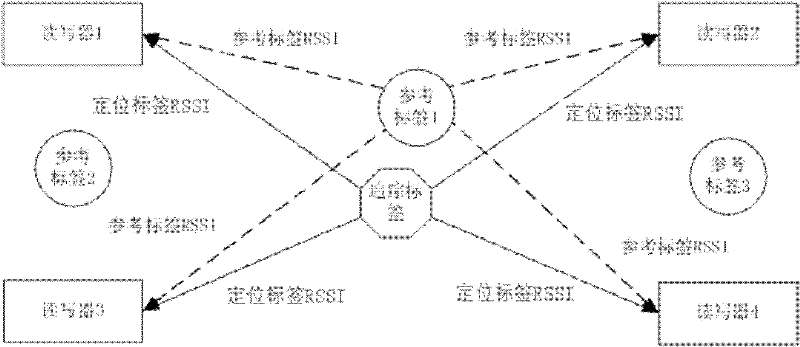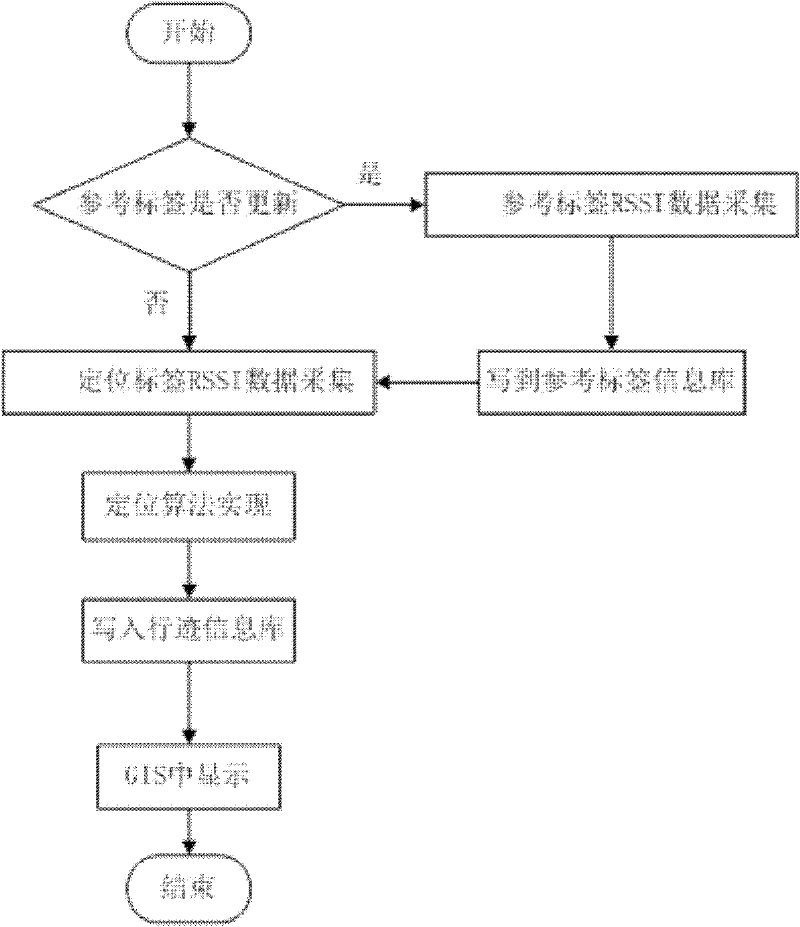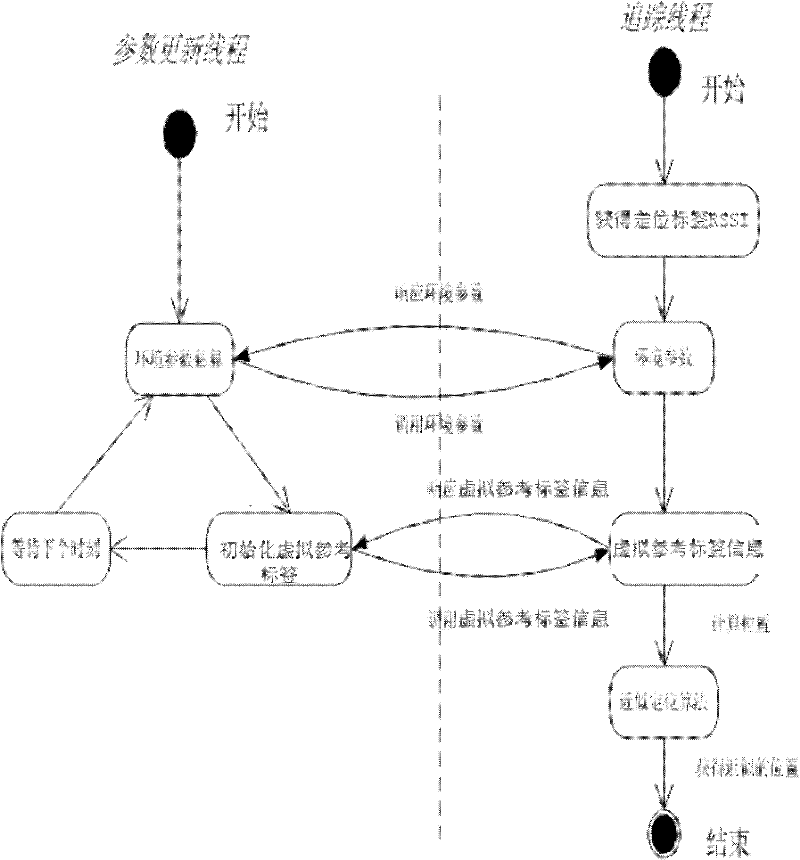Radio frequency indoor positioning method based on virtual tag algorithm
A wireless radio frequency, virtual tag technology, applied in the field of radio frequency identification, can solve problems such as radio frequency signal interference
- Summary
- Abstract
- Description
- Claims
- Application Information
AI Technical Summary
Problems solved by technology
Method used
Image
Examples
Embodiment
[0117] In order to verify the superiority of the positioning algorithm based on virtual reference tags in positioning accuracy, a series of comparative experiments were carried out between the positioning algorithm based on virtual reference tags and the LANDMARC algorithm. In the positioning experiment, the LANDMARC algorithm uses the number of adjacent reference tags K as 4 in order to obtain the best positioning accuracy, while the positioning algorithm based on virtual reference tags uses the aforementioned default settings in the experiment, and the two use the same The number of RFID readers and reference tags are placed in the same position, and then the positioning accuracy experimental results of the two are compared.
[0118] The entire positioning area is divided into three areas: the central area, the transition area, and the peripheral area according to the reference tag density and the distance from the reader, such as Figure 5 As shown, then evaluate the MEE of...
PUM
 Login to View More
Login to View More Abstract
Description
Claims
Application Information
 Login to View More
Login to View More - R&D
- Intellectual Property
- Life Sciences
- Materials
- Tech Scout
- Unparalleled Data Quality
- Higher Quality Content
- 60% Fewer Hallucinations
Browse by: Latest US Patents, China's latest patents, Technical Efficacy Thesaurus, Application Domain, Technology Topic, Popular Technical Reports.
© 2025 PatSnap. All rights reserved.Legal|Privacy policy|Modern Slavery Act Transparency Statement|Sitemap|About US| Contact US: help@patsnap.com



